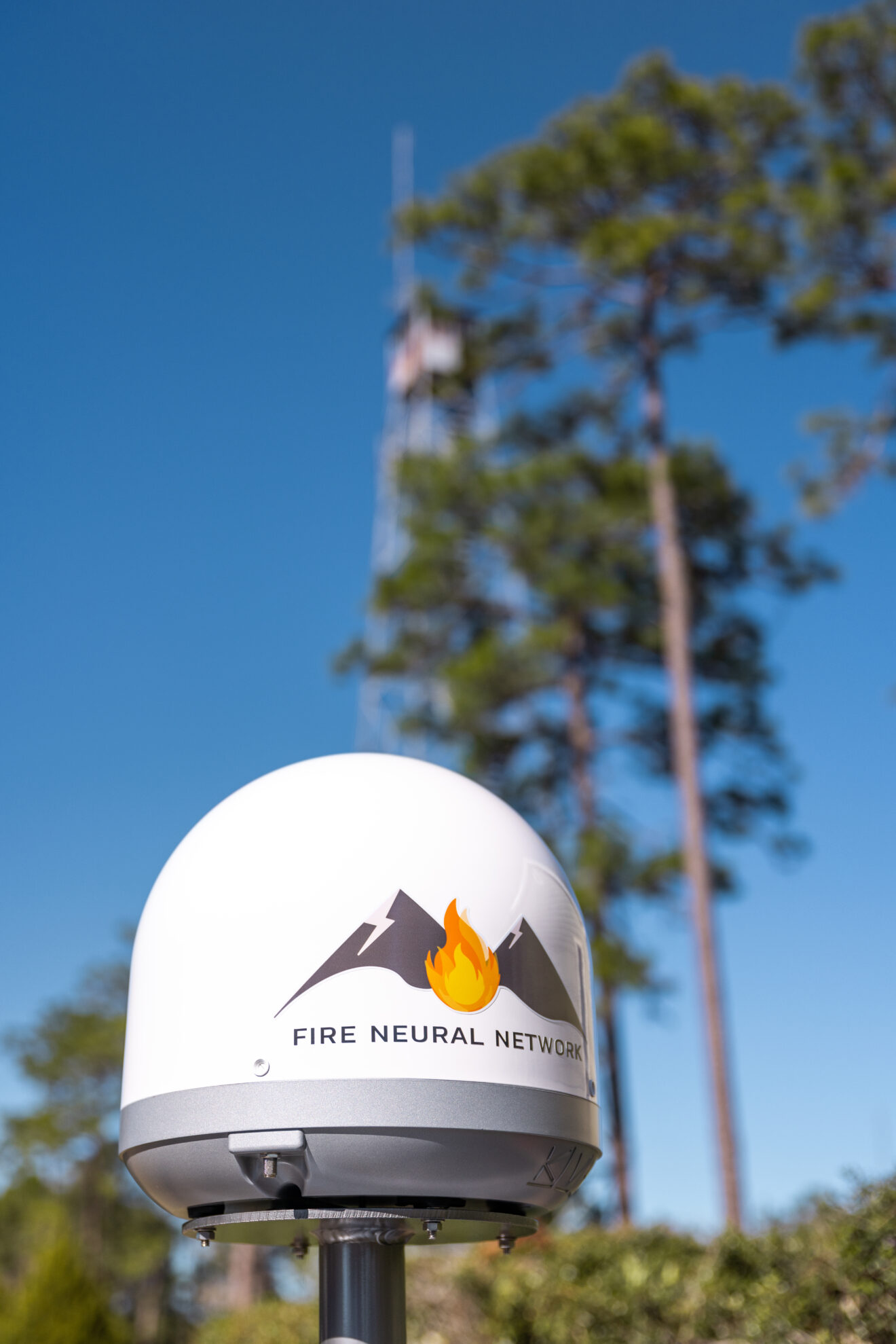UF Physics Startup Uses AI in Finding Fires with Lightning Speed
In 2020, Australian bushfires burned more than 65,000 square miles of land, killed at least 33 people, destroyed thousands of homes and released around 715 million tons of carbon into the atmosphere — nearly twice what the country emits in a typical year by burning fossil fuels. The carbon emissions from fires in California that same year erased the state’s gains from 16 years of efforts to cut emissions.
Climate change and land-use change have made uncontrolled and extreme wildfires one of the most serious threats to every continent on the globe, except Antarctica. That their flames contribute massively to the global climate crisis is a double whammy.
“This needs to be solved in the next decade if we want to avoid devastation to biodiversity, ecosystems and people,” said Istvan Kereszy, Ph.D., the CEO and co-founder of Fire Neural Network, or FNN, a Gainesville, Florida-based company that applies artificial intelligence to reduce the time it takes to identify a devastating wildfire from 24 hours to just 40 seconds.
Lightning is the No. 1 cause of wildfires, and lightning-ignited fires are nine times larger than those caused by humans because they can smolder for days until weather conditions become right for it to burst into a hard-to-control megafire. Using its network of lightning detectors, data from the latest environmental satellites and AI processing adopted from astrophysics, FNN delivers real-time accurate information to fire and forest managers.
The idea for FNN started simply as intellectual curiosity among scientists in the physics department at the University of Florida. During a trip to California to visit family, associate professor of physics Imre Bartos, Ph.D., had an up-close look at the devastation caused by uncontrolled wildfires.
“As a scientist, I wondered why it took days to spot a fire once it was sparked, giving it time to become catastrophic,” said Bartos, FNN’s chief technology officer whose day job is finding distant black hole collisions in the universe. Bartos took his question to Kereszy, a PhD student in the department at the time who was studying lightning properties with UF’s lightning lab.

“Imre’s question struck a chord with me,” Kereszy said. “He and his astrophysics colleagues could look back millions of years and map out distant galaxies, but we cannot find a fire that’s 20 miles away.”
FNN has created what could be called a 21st century watch tower, locating dangerous lightning-sparked fires in seconds, so fire managers can decide whether to put them out or let them burn.
Some fires are good — nature’s way of clearing out the dead litter on the forest floor that fuels the bad fires. Prescribed burning is an effective way to reduce the fuel load, but it takes time, Kereszy said.
“With wildfires, it’s all about speed — the faster you find them, the easier they are to fight,” he said, “Each year the wildfires become more severe, so we can’t use the same technology we used 40 years ago. For example, as artificial Intelligence is becoming powerful, we can harness it to fight fires.”
Pinpoint accuracy

By combining expertise in lightning properties, high-energy atmospheric physics and machine learning analysis to locate dangerous lightning strikes, FNN is reaching across the globe to help end the wildfire crisis. The company has installed its high-risk lightning detection systems throughout Central Florida, and by midyear, the company should cover a large part of the state and complete installation for clients in California, Brazil, Australia and Southern Europe.
“It’s a game-changer,” Kereszy said. “If it’s a small fire, we can put it out with a bucket of water.”
Using an AI processing system, FNN determines whether a lightning strike will result in a fire by analyzing many different layers of data, like the properties of the lightning, along with temperature, precipitation, vegetation and fuel data, Bartos explained.
“It allows us to find that single needle in the haystack — to pinpoint where a high-risk strike has occurred, all in 40 seconds,” he said.
FNN works closely with local agencies who are most familiar with the fire risks of their region. The Florida Forest Service was one of the first groups Kereszy and his partners approached with their idea. They’ve also partnered with Brazilian National Institute for Space Research, Australian National University-Optus Bushfire Research Centre of Excellence, NASA and the National Oceanic and Atmospheric Administration, or NOAA.
“We can’t tackle this alone,” Kereszy said. “We need to form partnerships and listen to the people who have decades of experience managing the land and fighting the fires.”
As a Gainesville-based company born from an idea that blossomed in the halls of UF, FNN continues to advance and improve its approach, collecting lightning and fire data from around the world.
“We want to help stop the devastation,” Kereszy said. “What’s cool is that we brought together two of UF’s strengths — lightning research and artificial intelligence — to advance our mission to help stop uncontrolled wildfires across the globe.”
